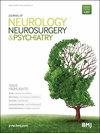JUVENILE PARESIS IN ONE TWIN.
引用次数: 0
Abstract
Introduction IT is now widely accepted that congenital syphilis is an infection that is acquired in utero from the mother, usually in the later months of pregnancy. It is not perhaps so widely recognized that in the case of twin pregnancies it is not unusual for the twins to suffer the luetic infection unequally. One twin may be born healthy, the other diseased; or if both are diseased the symptoms may appear at differing periods after birth and vary in severity in the two infants. This may be true for monozygous as well as dizygous twins. A considerable number of cases illustrating these facts have now been published, and the reader may be referred to the papers with bibliographies of Haslund (1924) and Bergel and Zimmermann (1932). " The literature of syphilis," said Jonathan Hutchinson, " is encumbered with ill-founded opinions and untrustworthy facts." It is unfortunate that in many of the cases reported in the era of the Wassermann reaction, the " healthy " twin has been kept under observation for a few weeks or months only. The syphilitic twin has usually died and a post-mortem has established the diagnosis. The zealous author, fearful lest his enthusiasm should wane, records the case without observation of the apparently unaffected twin over a sufficiently lengthy period of time to prove the freedom from latent infection. In rare cases the twins survive infancy, and symptoms of delayed congenital syphilis appear in later childhood. Here again it is not infrequent to find total escape or mild infection of one twin while the other shows the disease in severe degree. The following exposition of a case of juvenile paresis in one twin, the other twin completely escaping infection, provides further proof of the vagaries of prenatal infection. The twins have been under observation at the West London Hospital for the past seven years. Repeated clinical examinations and serological tests of blood and cerebrospinal fluid have been made over this period, not only on the twins but on the other members of the family.双胞胎中有一人患有幼年性脑轻瘫。
本文章由计算机程序翻译,如有差异,请以英文原文为准。
求助全文
约1分钟内获得全文
求助全文

 求助内容:
求助内容: 应助结果提醒方式:
应助结果提醒方式:


